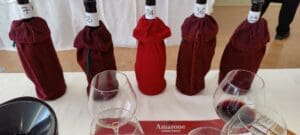Like anyone who gets questions about wines, the most commonly asked was “What’s Old World and New World”. Generally accepted, notion of Old World points to wine-producing regions within Europe, and New World being everywhere else. But wine making has been the livelihood for people outside Europe for centuries, the Australians been at it for 200 years while South African wine industry dated back to 1650. What’s with the age anyway?
When I started on wines in early 2011, people were telling me of all the wines they drank, the best were the old world. Having spent millennia and centuries on vines growing, grapes crushing and wine making, they can’t possibly be wrong. But time itself does not guarantee everything but physical existence, but such is enough to serve as benchmark.
And they said, the rest of the world, who were ‘new’, were simply trying to mimic this success. Shiraz from South Australia was blunt, unrefined and ‘ugly’. Western Australia can’t make good wines, New Zealand Pinot Noir were piss. But of course, on hindsight these were simply baseless accusations.
It didn’t took me long to be in new company of wine drinkers. New world fans, revolutionists, rebels, or modernists, take your pick. Leeuwin Estate was no piss, both McClaren Vale and Barossa demonstrated Shiraz in their own style. New Zealand Central Otago Pinot Noir was, and still is, my favourite. While these folks swear by the new world, there are others, who swear at it.
As I listen to the Italian song Il Mondo depicts how things change as we savour the moment, one cannot deny the stylistic changes are happening in every vintage. The new world chases the old, and the old reciprocates.
Many new world wine makers are making wines that are stylistically akin to those of old world. One such example I reckon is d’Arenberg Feral Fox Adelaide Hill Pinot Noir. A beautifully crafted wine with restraint red fruits, velvety texture and developed into delicious savoury smell of “chee cheong fun” sauce. While displaying signs of fruit forwardness like those from the Oceania regions, it doesn’t fall short in its aroma complexity. Unashamedly presenting the slight dried leafy and “stalkish” expression, bringing itself closer to Burgundian likeness.
For d’Arenberg, such product is a matter of choice with scientific backing although technology seems like a bane to old world supporters. Indeed technology has made wine making a process for manufacturing industry, but its availability has prevented spoilage, improved production quantity and quality. In Pinot Noir NZ 2013, Sam Neill’s presentation nailed it squarely on the advancement and discarding of traditions for New Zealand wine makers, in a comical fashion.
“We New Zealand producers are the bastards of Pinot. As in, good bastards, but also in the literal sense as well. We didn’t invent anything. We came from the European tradition. We inherited all our stuff from an old, and profound, and rich tradition. We are the bastards because we’re unwanted and unacknowledged. We live and thrive outside the big house, outside the old house. But like the best bastards anywhere, we don’t care. We take what we need. We are free to discard what we see as obsolete, and we are free to innovate where we see the need. It’s good to be bastards. It’s good to be good bastards.”
For the old world consumers, it is going to be some time before they can recognise the modernising effects. My advice to them will be to start accepting because the world is changing and your wines are drying. For new consumers, all they want are good affordable wines, not great wines, period.



